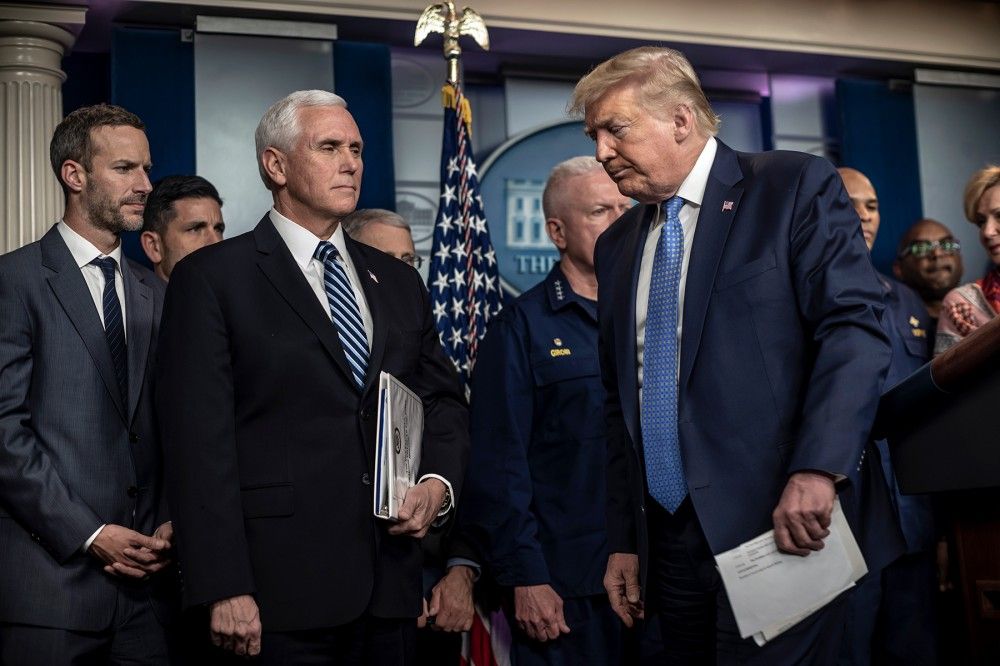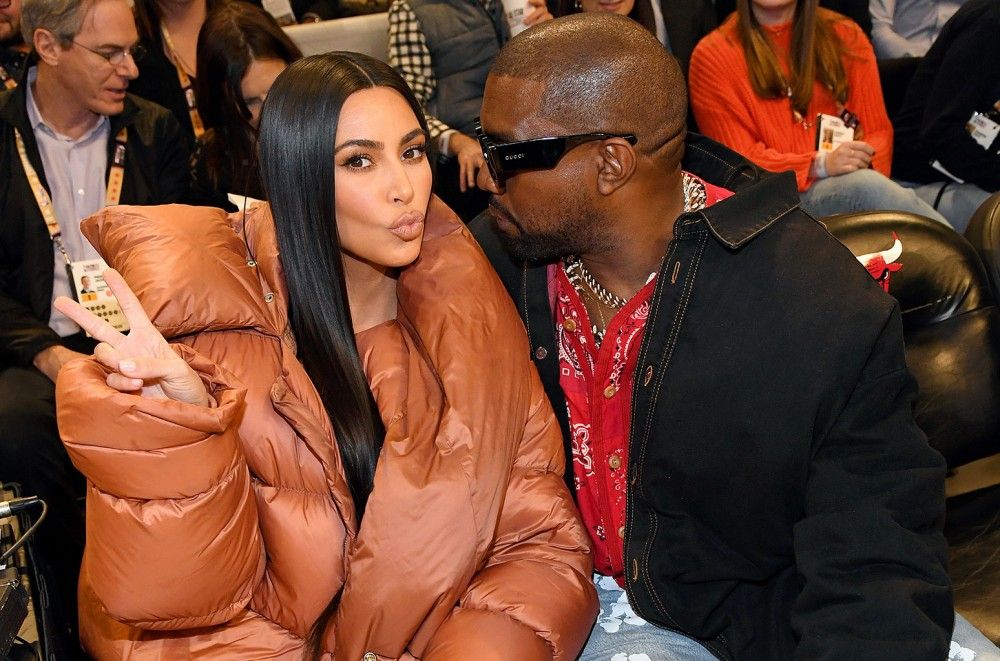
'Absolute Clusterf-k': Inside the Denial and Dysfunction of Trump's Coronavirus Task Force
This story appears in the May 2020 issue of Rolling Stone, on newsstands May 5th.
On February 24th, Dr. Duane Caneva, the chief medical officer at the Department of Homeland Security, sent an urgent email with the subject line “Red Dawn Breaking Bad” to a small group of doctors, epidemiologists, public-health officials, and pandemic experts. For more than a month, the scientists on the email chain had been tracking a deadly new virus that was ripping its way through Southeast Asia.
The people on the Red Dawn email chain ranged from local health officials in Texas and California to senior-level doctors at the U.S. Army, the CDC, the Department of Health and Human Services, and the State Department. Some of them had worked together in the White House in the mid-2000s. They had helped write President Bush’s 2007 national strategic plan for a flu pandemic and had advised President Obama on his response to the 2009 H1N1 outbreak. (The Red Dawn title was an inside joke referring to the 1984 B movie in which the Soviet Union invades America.)
By late February, the sense of alarm in the emails was palpable, as new cases were reported in Singapore, Hong Kong, South Korea, Japan, and Italy. One of the White House veterans on the chain was a pandemic expert named Dr. Carter Mecher, who is now a senior adviser at the Department of Veterans Affairs. Mecher got into the habit of waking up at 4:30 a.m. and combing the internet for data to help him understand this new virus and what might happen if it made it to America.
One day, he discovered a field report by Japan’s National Institute of Infectious Diseases about the Diamond Princess cruise ship, docked in Yokohama, which had suffered one of the first major coronavirus outbreaks. Mecher used the field report’s numbers to make a rough projection about how a severe pandemic might play out in the U.S., and he immediately shared it with his colleagues on the Red Dawn chain: By his calculation, if 30 percent of the American population were to get the new coronavirus, more than 1.7 million could die from it.
If those projections were even in the ballpark, a crisis of unimaginable proportions was fast approaching. Dr. Eva Lee, a health care operations expert at Georgia Tech, warned that there would likely be a critical shortage of personal protective equipment for nurses and doctors. Lee wrote, “I do not know if we have enough resources to protect all front-line providers.”
The experts immediately took their warnings to policymakers and officials in Washington, D.C. One public-health specialist, who asked to remain anonymous, says that when he briefed government officials in February, they were stunned to learn how grim the situation was — that it was too late to contain the virus, that mitigation was the only option, and that as many as half of all Americans could become infected from . “They looked at me like I was crazy,” the specialist says. “Because no one had told them before.”
By February 28th, the group’s warnings had reached the highest rungs of the Trump administration. One day after he was appointed to the White House Coronavirus Task Force, Dr. Jerome Adams, the surgeon general and chief medical officer for the United States, was added to the Red Dawn chain. A representative for Adams says the surgeon general didn’t see these emails, and in the days afterward, Adams downplayed the coronavirus threat, pointing out that “fried food” and “sitting on your couch” were more likely to lead to your death. But if Adams had read the emails, he would have read Mecher’s most dire warning yet.
Widespread testing problems had prevented experts from seeing the full scope of the crisis, but there was enough data by the end of February, Mecher wrote, to “convince people that this is going to be bad.” National leaders needed to use every tool available — social distancing, school closures, public-gathering bans, and so on — to mitigate the virus’s spread. Cities and states had already begun to prepare, but an outbreak of this magnitude called for nothing less than a nationwide response if we had any hope of stopping a full-blown pandemic.
“We have a relatively narrow window,” Mecher wrote, “and we are flying blind.”
If you were to write a playbook for how not to prevent a public-health crisis, you would study the work of the Trump administration in the first three months of 2020. The Trump White House, through some combination of ignorance, arrogance, and incompetence, failed to heed the warnings of its own experts. It failed to listen to the projections of one of its own economic advisers. It failed to take seriously what has become the worst pandemic since the 1918 flu and the worst economic crisis since the Great Depression. And when the White House finally awoke to the seriousness of COVID-19, the response it mustered managed to contain all the worst traits of this presidency. Trump and his closest aides have ignored scientists, enlisted family members and TV personalities and corporate profiteers for help, and disregarded every protocol for how to communicate during a pandemic while spewing misinformation and lies.
There was confusion in the response from the start. In January, Trump picked HHS Secretary Alex Azar II, the former president of pharmaceutical company Eli Lilly, to lead his new Coronavirus Task Force. The problem was, there was already a senior official at HHS whose job was coordinating the federal government’s response to a nationwide pandemic, Assistant Secretary for Preparedness and Response Robert Kadlec.
In late February, after it was clear that the virus had spread widely throughout the U.S., Trump reshuffled his task force. He replaced Azar with Vice President Mike Pence as the leader of the task force, and added Dr. Deborah Birx, the State Department’s global AIDS director and an infectious-disease expert, who joined Dr. Anthony Fauci, head of the National Institute of Allergy and Infectious Diseases, as the group’s scientific experts. But Trump also appointed administration loyalists like right-wing extremist Ken Cuccinelli and Seema Verma, the head of the Centers for Medicare and Medicaid Services and a vocal critic of the Affordable Care Act.
Like so many things in Trumpland, the work of the task force has gotten mired in petty politics and internal turf wars. A “shadow” task force emerged, led by . Officially, Kushner’s team of McKinsey consultants, financiers, and old buddies from his New York business days was meant to coordinate collaboration between the government and the private sector. But it soon devolved into a typical Trump boondoggle. A company Kushner had once invested in, Oscar Health, was tapped to build a government website that would speed up testing (the site was later scrapped). Kushner turned to his brother Josh’s father-in-law, Kurt Kloss, who was a doctor, for recommendations on how to deal with the crisis. That led to Kloss — the father of supermodel Karlie Kloss, Josh’s wife — posting on a Facebook group for emergency-room doctors that he was looking for smart ideas and had a “direct channel to the] person now in charge at the] White House.”
Federal agencies that normally play a central role in disaster-response efforts have found themselves left out of the action. Pete Gaynor, the head of the Federal Emergency Management Agency, told Congress that his agency wasn’t invited to join the president’s Coronavirus Task Force until the week of March 16th — six weeks after the task force was created.
Other federal employees involved in the response effort have had to respond to different and sometimes competing requests and directives from Pence’s task force and Kushner’s task force. “All of those roles and responsibilities should be relatively well-established,” says one public-health official who’s dealt with the White House. “I’ve heard that people in HHS will get direction from Kushner’s team that directly contradicts what they’re getting from the White House task force, and then trying to deconflict those becomes a huge problem.”
Sen. Chris Murphy (D-Conn.) says he and his staff spent a week trying to understand the Trump administration’s strategy for directing the production and distribution of critical medical supplies amidst the crisis; Murphy’s conclusion, as he put it in a tweet, was that Trump’s plan was “a total, complete, absolute clusterf**k.” When Murphy asked the White House for a call with the federal agency leading the effort to get private companies to manufacture and distribute medical supplies, he expected to be connected with FEMA, which typically handles this kind of work in a crisis, or Peter Navarro, the newly appointed national Defense Production Act policy coordinator. Instead, he was told to call the Department of Defense. “I walked away from that conversation scratching my head, like, ‘Who’s in charge?’ ” Murphy tells Rolling Stone. “DOD clearly has expertise, but it seems completely unclear whether the White House is in charge, DOD is in charge, FEMA is in charge, or HHS is in charge.”
The Trump administration’s reflexive bias against science and facts expertise couldn’t be more clearer than in the sidelining of the Centers for Disease Control and Prevention, the crown jewel of the country’s public-health system. Dr. Robert Redfield, the CDC’s director, sits on the Coronavirus Task Force and has participated in closed-door meetings, but he has appeared at only a few of the dozens of press briefings held by the task force. Trump trashed the agency on Twitter in mid-March (“inadequate and slow”), and the CDC has since taken a back seat to other federal agencies in communicating with the public.
“I’m worried that the CDC is not front and center now,” Dr. Tom Frieden, who served as CDC director from 2009 to 2017, tells Rolling Stone. “In every other public-health emergency in this country since the CDC was founded nearly 75 years ago, it has had a leading role. The CDC is the best source of information on COVID-19.” Frieden adds, “Fighting coronavirus without CDC is like fighting with one hand behind your back.”
Adding to the confusion, the White House has made crucial pledges and then failed to meet them. In early March, Pence vowed that more than a million tests would be ready within days. Azar followed that up by saying there would be “up to 4 million tests” available by the middle of March. Yet by March 31st, there had been just more than 1 million tests conducted.
Nowhere is the chaos of Trump’s coronavirus response more clear than in the White House’s bungled efforts to help meet the demand for desperately needed medical supplies. On March 18th, Trump signed an executive order that invoked the Defense Production Act, the 70-year-old law that allows a president to commandeer U.S. manufacturers to produce critical materials in a time of crisis, but later that same day said he didn’t plan to use it. While doctors, first responders, mayors, and governors issue daily warnings about a dire shortage of N95 masks, scrubs, and ventilators, Trump tweeted that the act was “in full force, but haven’t had to use it” because states were asking for equipment “that I don’t think they’ll need,” a direct contradiction to the pleas of dozens of governors and mayors.
By not taking greater control of the medical-supply chain, Trump is, in effect, pitting states against one another, with wealthier states beating out poorer ones. “What we’re doing is creating a world of winners and losers rather than accounting for priorities based on timings, needs, and best use,” says Steve Schooner, a George Washington University professor and expert on government procurement.
Sen. Murphy says the Trump White House’s indecision and conflicting messages have created a Hunger Games-like environment with states desperately trying to outbid one another for medical supplies and relying on personal connections and word-of-mouth information to find the supplies they need. “I got an email the other day from a guy who knows an aid worker in Venezuela who’s come across a stockpile of millions of masks,” Murphy says. “I’m almost embarrassed to forward the information to Connecticut] Governor Lamont, but it’s my obligation to do it.”
Why is the administration not taking over the supply chain?
“It’s because they’re getting pressure from the Chamber of Commerce to stay out of the marketplace so that the profiteering can continue,” Murphy says. The chamber, which represents some of the nation’s biggest corporations, has lobbied against the Defense Production Act because it claims it would unreasonably disrupt the supply chain during the crisis. (The chamber did not respond to a request for comment.) “The administration has decided to put the profits of these companies ahead of saving lives,” he says.
On the last Friday in January, Trump announced a ban on foreign nationals who had recently traveled to China from entering the U.S. Any Americans who had been to China would be diverted to a small number of airports for screening and possibly to be quarantined. One of those airports was Chicago’s O’Hare, but Chicago Mayor Lori Lightfoot says no one in the White House bothered to give her a heads-up about the new order.
Lightfoot and her team spent the weekend trying to figure out what Trump’s order meant and how to implement it. If someone stepped off a plane from China and had to go into a mandatory 14-day quarantine, what authority did Chicago have to enforce that? Where would they put that person — at the airport? In a hotel? They would also need 24-hour security to make sure they remained in quarantine for the full two weeks — who was going to pay for that?
Lightfoot got on the phone with the various government agencies — HHS, Homeland Security, CDC — that should have answers to those questions. What she got instead were conflicting responses from each agency. After talking with other mayors, she realized that the agencies were not only telling Chicago different things, but the same agencies were also giving different guidance to the leaders of other cities. “That really set the tone for the nonsense that you’ve seen every day since,” Lightfoot says. “There was tremendous frustration realizing they weren’t going to help us at all.” (A task-force spokesman says the administration briefed Chicago several times about the January 31st travel restrictions and touts the task force’s “unprecedented outreach to the state, local, and tribal level.”)
Lightfoot wrote letters to Trump and Pence, and waited nearly two months before getting a brief call with Pence. She’s banded together with other mayors and local leaders to devise a response to the coronavirus pandemic. Every Sunday, she joins a conference call with other mayors to share data and learn from one another’s efforts to get ahead of the pandemic. She’s mostly given up on receiving any serious help from the federal government.
“We have known we can’t depend on the federal government; it would be great if they stepped up and did what needs to be done, but you see it for yourself,” Lightfoot says. “There’s no leadership there.”



